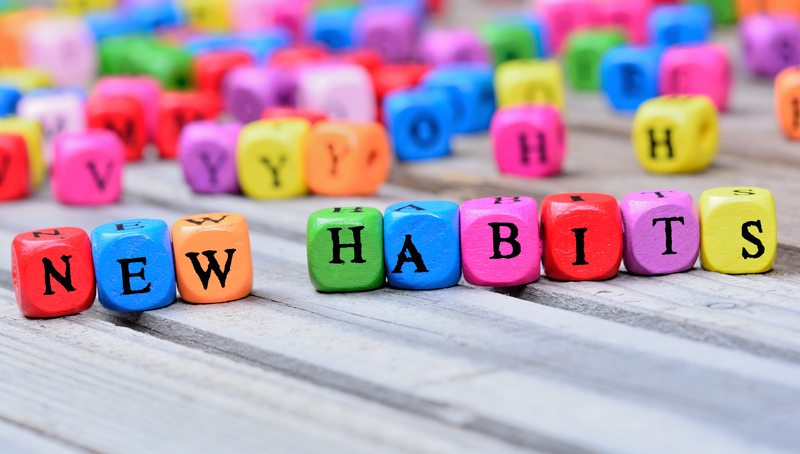“We are what we repeatedly do: excellence, then, is not act, but a habit.” —Will Durant
We all have goals we want to achieve. Addressing the habits you need to create — or break — in order to accomplish those goals is key to your success! Over your lifetime, you have developed habits that become second nature. Some are good, like having vegetables with your dinner, but some might not be so good, like having dessert after each meal. Good or bad, all habits follow a cycle of cue, action and reward.
For example, a cue could be finishing your dinner. The action is having a sweet treat, and the reward is the release of dopamine that makes you feel good!
Ivan Pavlov demonstrated cue, action and reward in a well-known dog experiment. Every time Pavlov fed his dogs, he rang a bell. After many weeks of repetition, the bell was the cue, eating was the action and the yummy food and a full belly was the reward. Pavlov even noticed the dogs would start salivating when they heard the bell with or without the presence of food. This helped prove classical conditioning, which means we learn new behaviors through repetition, and our brain is wired to maintain habits — good or bad.
When you are performing a new action or habit, your brain actually has to work harder, which is why new habits can be difficult to build. Once a habit is built, however, your pre-frontal cortex shuts off and carrying out the action becomes easier.
Imagine if implementing a workout routine felt as easy as brushing your teeth! It can be using the concept called habit stacking. This concept was made popular by S.J. Scott in his book, “Habit Stacking: 97 Small Life Changes That Take 5 Minutes or Less.” James Clear is another notable author who refers to habit stacking in his book, “Atomic Habits.”
New habits are harder to maintain; however, when you stack them with a current habit, you can easily cue yourself for the new habit. For example, if you want to drink more water, you may try to adopt a new behavior of drinking a cup every morning. This alone may take a lot of thought, but if you were to stack that habit with a pre-existing habit (brushing your teeth), it will be easier for your brain to incorporate. When you brush your teeth in the morning, you’ll get the cue to drink a glass of water.
Take a moment to write down your daily habits. You can also write down events that happen each day, like the phone ringing or driving in your car. Once you nail down your current habits and daily events, you can start to better understand the possibilities of habit stacking.
Make sure you choose the right habits to stack, though. If your goal is to read more, you might think it makes sense to stack reading onto your bedtime routine. If reading in bed winds up making you fall asleep, this might not make the most sense for you. You should also avoid stacking habits into an already inconsistent schedule. For example, if your kid’s bedtime routine is inconsistent, stacking a new habit with the bedtime routine probably isn’t a good idea.
Give habit stacking a try — just remember to be specific and realistic when choosing which habits to stack. Remember: small, repetitive behaviors over time can end up creating a long-term change!
By: Lauren Scotti

